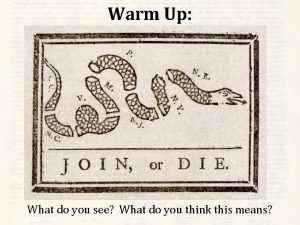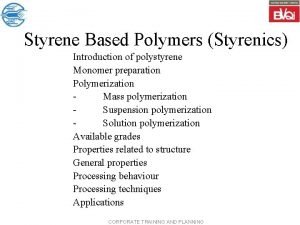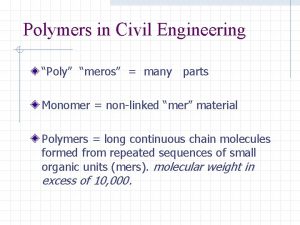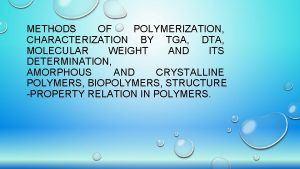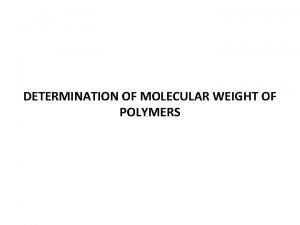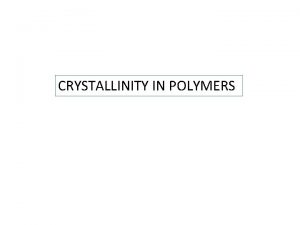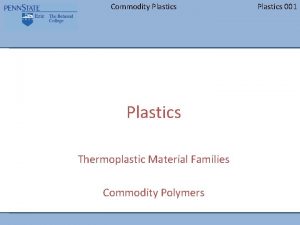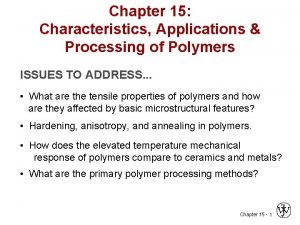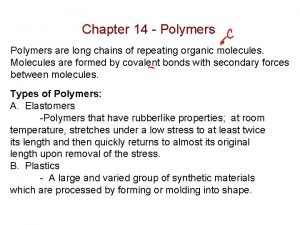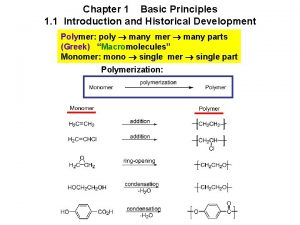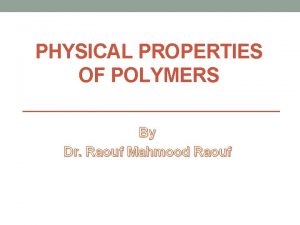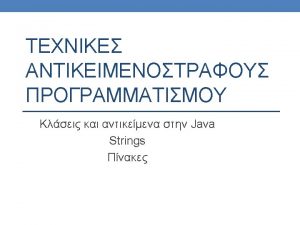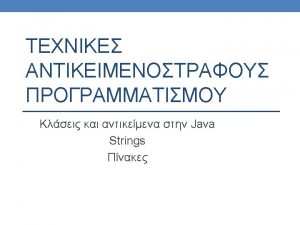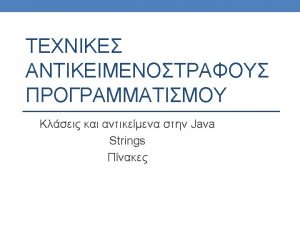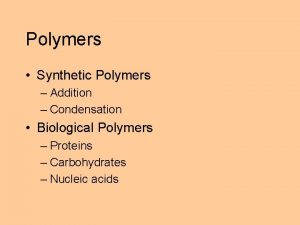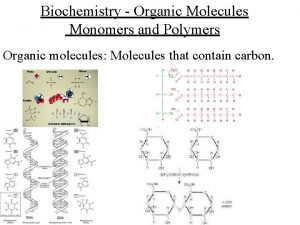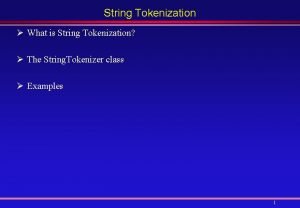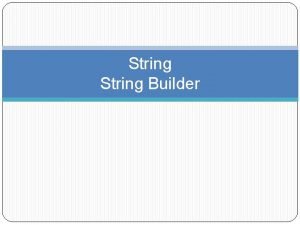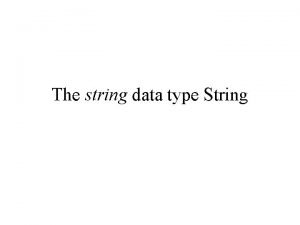Polymers Long string like molecules give rise to
































- Slides: 32

Polymers Long string like molecules give rise to universal properties in dynamics as well as in structure – properties of importance when dealing with: • Pure polymers and polymer solutions & mixtures • Composites (reinforced plastics) • Biological macromolecules (DNA, Factin, cellulose, natural rubber etc. ) Hevea brasiilensis

Today's content With simple models we will be able to: • Define length-scales in polymers (rms endto-end distance, radius of gyration, Kuhn length, etc). • Describe dynamic properties (viscosity, rubber elasticity and reptation, etc).

Structure and Chemistry • Polymers are giant molecules usually with carbons building the backbone – exceptions exist (poly dimethylsiloxane) • Linear chains, branched chains, ladders, networks, dendrimers • Homopolymers, copolymers, random copolymers, micro phase separated polymers (like amphiphilic polymers)

Some different polymers

Molecular weight and dispersion Syntetic polymers always show a distribution in molecular weights. number average : weight average: (ni and wi are number and weight fractions, respectively, of molecules with molar mass Mi) The polydispersity index is given by Mw /Mn

Molecular weight and dispersion an example: Here are: 10 chains of 100 molecular weight 20 chains of 500 molecular weight 40 chains of 1000 molecular weight 5 chains of 10000 molecular weight

Stereochemistry • Isotactic – side groups on the same side of the chain (a) • Syndiotactic – alternating side groups (b) • Atactic – random arrangement of side groups (c) Stereo isomers of poly propylene Tacticity determines ability to form crystals: Disordered, atactic polymers form glasses.

Rotational isomers Newman projections of the C-C bond in the middle of butane. Rotation about σ bonds is neither completely rigid nor completely free. A polymer molecule with 10000 carbons have 39997 conformations The energy barrier between gauche and trans is about 2. 5 k. J/mol RT~8. 31*300 J/mol~2. 5 k. J/mol

Random walks – a chain model For a polymer chain model; • Consider random steps of equal length, a, defined by chemical bonds Complications: • Excluded volume effects • Steric limitations The chain end-to-end vector R “describes” a coil made up of N jump vectors ai.

Random walk … R is made up of N jump vectors ai. The average of all conformational states of the polymer is <R>=0 The simplest non-zero average is the meansquare end to end distance <R 2> (A matrix of dot-products where the diagonal represents i=j and off axis elements i≠j) For a freely jointed chain the average of the cross terms above is zero and we recover a classical random walk: <R 2>=Na 2 The rms end to end distance <R 2>1/2=N 1/2 a

A size example: An ideal polymer chain with 106 repeat units (not unusual), each unit about 6Å will have: • a rms end-to-end distance R of 600 nm • a contour length of 600 μm The rms end to end distance <R 2>1/2=N 1/2 a

Real chains have steric limitations • In freely rotating chains Φ can take any value; σ2=1. Poly ethylene: Θ = 109. 5° → <R 2>=2 Na 2 • With hindered rotation σ2 depends on the average of Φ. σ is experimentally determined.

Space filling? The random walk and the steric limitations makes the polymer coils in a polymer melt or in a polymer glass “expanded”. However, the overlap between molecules ensure space filling

Gaussian distribution The distribution of end-to-end distances (R) in an ensemble of random polymer coils is Gaussian. The probability function is: The probability decreases monotonically with increasing R (one end is attached at origo). The radial distribution g(R) is obtained by multiplying with 4πR 2

The radial distribution function g(R) P(R) g(R) Adopted from Gedde; Polymer Physics

Entropic Effects in a Gaussian Coil ln P(R) = ln Ω; where Ω=statistical weight Since S=kblnΩ we have an expression for the entropy of a Gaussian coil: Entropy decreases with stretching (increasing order) F=U-TS => The “Entropic Spring” with a spring constant: d. F/d. R=3 kb. TR/Na 2 OBS: d. F/d. R Increases with T, decreases with N – not like a traditional spring which depends on U!

“Real” Polymer Chains Recall that : The correlation between bond vectors “dies” with increasing separation: Thus the sum over bond angles converges to a finite number and we have: Flory Characteristic Ratio b=Kuhn segment After renormalisation this relation holds for all flexible linear polymers!

Radius of Gyration of a Polymer Coil The radius of gyration Rg is defined as the RMS distance of the collection of atoms from their common centre of gravity. R For a solid sphere of radius R; For a polymer coil with rms end-to-end distance R ;

The excluded volume effect • Steric hindrance on short distances limits the number of conformations • At longer distances we have a topological constraint – the self avoiding walk – or the excluded volume effect: Instead of <R 2>1/2=a. N 1/2 we will have <R 2>1/2=a. Nν where v>0. 5 Experiments tells us that in general: v~0. 6 Why?

Excluded volume according to Flory Consider a cube containing N segments of a polymer V=r 3 where r is the radius of gyration. The concentration of segments is c~N/r 3 Each segment with volume “ ע stuffed” into the cube reduces the entropy with –kb ע N/V = -kb ע N/r 3 (for small x; ln(1 -x)~lnx) The result is a positive contribution to F; Frep= kb ע TN/r 3 (expansion of the coil) From before; Coiling reduces the entropy; Fel=kb. T 3 R 2/2 Na The total free energy F is the sum of the two contributions! Search for equilibrium!

Flory’s result for the swollen coil:

Polymer melts – a simpler case In dilute polymer solutions the excluded volume effect is large. (OBS Theta cond. Later) When chains start to overlap the expanding force on a single coil will be reduced In a polymer melt the concentration of segments is uniform due to space filling. No swelling!

Viscoelastic properties in polymers characteriscs A stress σ0 is applied at time t=0 and held constant. The strain e(t) is followed over time. The creep compliance J(t) is given by: e(t)= σ0 J(t) A strain e 0 is applied at t=0 and held constant. The stress σ(t) is followed over time. The stress relaxation modulus G(t) is given by: σ(t)=e 0 G(t)

The complex modulus G* If a sinusoidal strain is applied: e(t)=e 0 cos(ωt) the resulting stress is given by: σ(t) = e 0[G’(ω) cos(ωt) – G’’(ω) sin(ωt)] The complex modulus, G*= G’(ω) + G’’(ω) is given by a Fourier transform of G(t). G’ gives elastic response, G’’ the viscous responce

Time-temperature superposition All relaxing modes in a polymer melt or a solution have the same Tdependence. Therefore: G(t, T) = G(a. Tt, T 0) where log a. T = -[C 1(T-T 0)]/[C 2+T-T 0] “Quasi-universal” values of C 1 and C 2 are 17. 4 and 51. 6 K, respectively The superposition principle help us building larger data set over timescales/temperatures otherwise out of reach

Viscoelasticity The stress relaxation G(t) for two polymers (homologues) with different molecular weights. At short time the curves are identical. At intermediate times we have a plateau with a constant modulus – the plateau modulus. The plateau ends at a terminal time τT which depends strongly on molecular weights (N) according to a power law τT~Nm where the exponent m ≈ 3. 4 Two Q’s arises: 1) Why is m ≈ 3. 4 almost universal? 2) why do we have an almost purely elastic behaviour at the plateau?

Q 1: The tube model and the idea of reptation Every segment in the tube have a mobility, μseg restricted by the surrounding “resistance”. The tube with N segments have a mobilty, μtube= μseg/N Brownian motion within the tubes confinement – use Einstein relation to calculate a Diffusion coefficient => A polymer escapes from its own tube of length L after a time τT => Dtube=kb. T μseg/N Close to the exp. results!

Q 2; The rubber plateau and entanglements In a similar way as we explained the elastic behaviour at very short times for all simple liquids “as a glassy state” we can explain the rubber plateau in a qualitative way as a signature of entanglements. It can be shown that in a rubber, a cross linked polymer (see Ch. 5. 4), the elastic modulus depends on the average molecular mass between cross-links Mx, R , T and the density ρ: Adopting an identical relation and treating the entanglements as temporary cross-links with a lifetime of the order of τT we can calculate an average mass of the molecular mass between the entanglements (Me).

Polymer solutions Polymers in solutions are a major topic in polymer science – applied as well as theoretical. • Polymer segments in a solution have an interaction energy with other (near by) segments apart from covalent bonding: wpp • In a similar way we have an interaction energy between the solvent molecules: wss • When the polymer becomes disolved we have a new interaction energy between solvent and polymer: wps

A х-parameter for polymer solutions Following the arguments from chapter 3 we derive an expression for the mixing when new p-s contacts are made and old p-p and s-s contacts are lost: The internal energy U will change with the addition of polymer to a solvent:

The good the bad and theta Combining the new expression for ΔUint with the previous for coil swelling: The value of x determines if excluded volume effects are dominating or whether they are counteracted by the p-s interaction: When x=1/2 the two energies cancel and we have a “theta solvent” with pure random walk conformation! When x<1/2 the coil is swollen (A good solvent; Clint E? ) When x>1/2 the coil forms a globule (A bad or poor solvent)

Next Wednesday: More about solutions and polymer gels.
 Http protocol description
Http protocol description Organic molecules vs inorganic molecules
Organic molecules vs inorganic molecules Sheep become lions
Sheep become lions Richard nixon tricky dicky
Richard nixon tricky dicky Rise and rise again until lambs become lions
Rise and rise again until lambs become lions A union b example
A union b example Short short short long long long short short short
Short short short long long long short short short Once upon a time there lived an old man and an old woman
Once upon a time there lived an old man and an old woman Const name void
Const name void Public class plant private string name
Public class plant private string name Java new string
Java new string Honc 1234
Honc 1234 Bead like structures formed by dna and histone molecules
Bead like structures formed by dna and histone molecules What is the main idea of give me liberty or give me death
What is the main idea of give me liberty or give me death Power of love hillsong
Power of love hillsong X mold
X mold Thermal polyaspartate
Thermal polyaspartate Abs plastic
Abs plastic Thermosoftening plastics examples
Thermosoftening plastics examples Polymers in civil engineering
Polymers in civil engineering Polymers product design
Polymers product design Polymeric dental materials
Polymeric dental materials Homochain polymers
Homochain polymers Methods to determine molecular weight of polymer
Methods to determine molecular weight of polymer Fringed micelle model
Fringed micelle model Commodity polymers
Commodity polymers Structure polymer
Structure polymer Application and processing of polymers
Application and processing of polymers Molecular weight units
Molecular weight units Homochain polymers
Homochain polymers What is biomaterial
What is biomaterial Definition of film coated tablet
Definition of film coated tablet Polymer physical properties
Polymer physical properties













